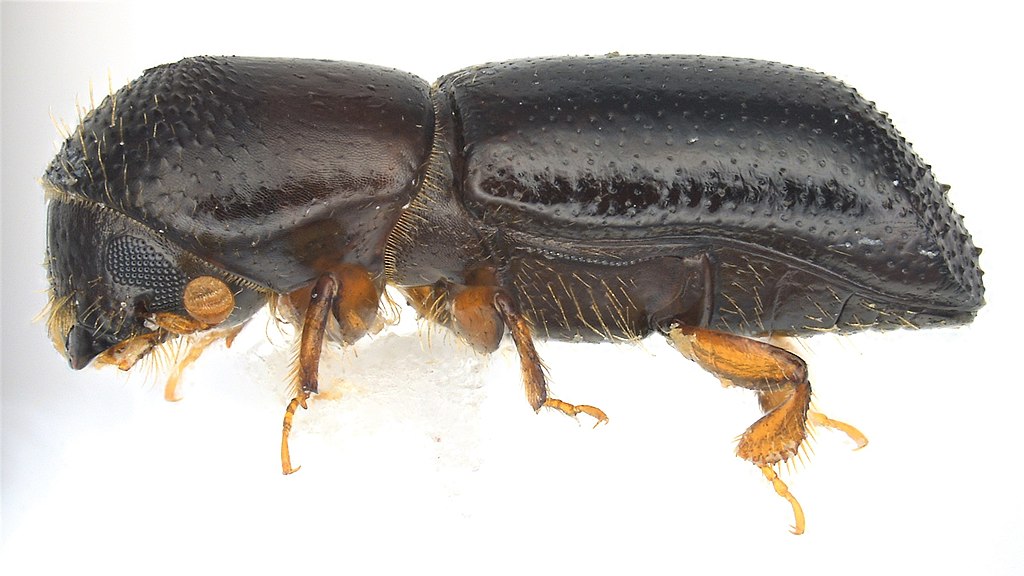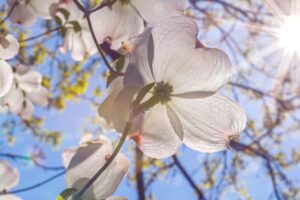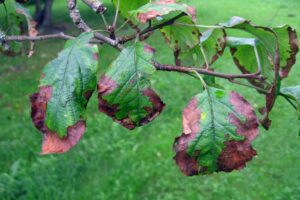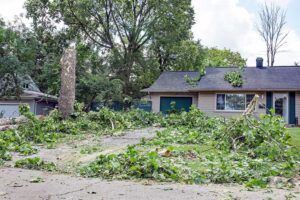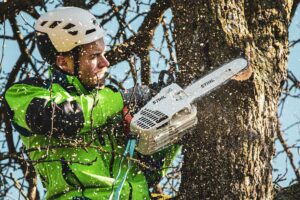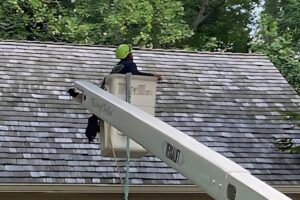The redbay ambrosia beetle is a tiny insect pest that causes big problems for Northern Virginia’s laurels. Unlike other ambrosia beetles that infest dead trees, the redbay ambrosia beetle attacks live trees and shrubs in the laurel family, spreading laurel wilt – an untreatable fungal disease that quickly kills infested plants.
In this article, we’ll discuss:
- What the redbay ambrosia beetle is, and where it has been found
- How the redbay ambrosia beetle spreads laurel wilt
- How laurel wilt kills trees and shrubs, often in just a few weeks
- Signs of redbay ambrosia beetle infestation and laurel wilt
- The impacts of laurel wilt on other species
- 5 things you can do to stop the spread of laurel wilt
What is the Redbay Ambrosia Beetle?
The redbay ambrosia beetle (Xyleborus glabratus) is an invasive insect decimating laurel trees in Northern Virginia and other parts of the eastern United States. Introduced from Asia, the beetle was first spotted in the US in 2002 in Georgia. The beetle was first detected in Virginia in 2021.
Unlike other ambrosia beetle species that utilize only dead trees for survival, the redbay ambrosia beetle depends on live laurel trees to complete its life cycle. This unique cycle spreads the Raffaelea lauricola fungus, the pathogen responsible for laurel wilt, a deadly disease that kills all species of the laurel family (Lauraceae).
In Northern Virginia, the most common laurels are sassafras (Sassafras albidum) and spicebush (Lindera benzoin). Sassafras is a small to medium-sized deciduous tree, while spicebush is a multi-stemmed, deciduous shrub. Other species in the laurel family found in Virginia include redbay, swamp bay, silk bay, pondberry, and pondspice.
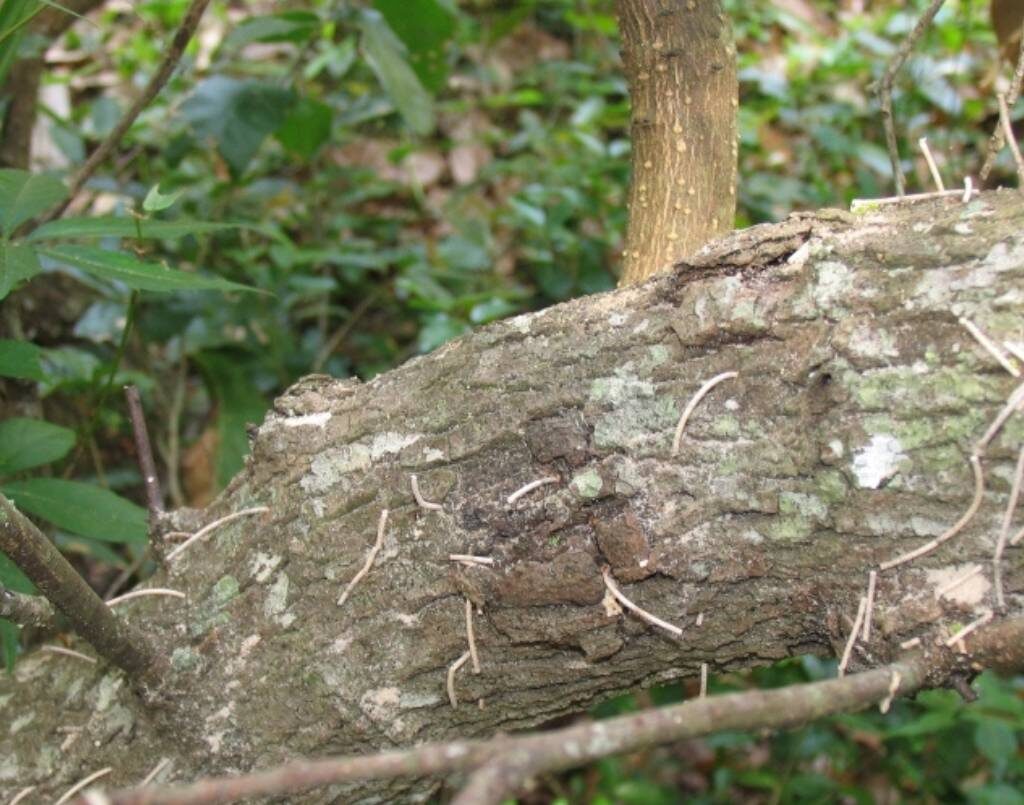
These thin sawdust tubes are the byproduct of the redbay ambrosia beetle’s tunneling through the laurel sapwood. Photo courtesy of Albert (Bud) Mayfield, USDA Forest Service, Bugwood.org.
How the Redbay Ambrosia Beetle Spreads Laurel Wilt
The spread of laurel wilt begins when the redbay ambrosia beetle carries a small amount of the Raffaelea lauricola fungus as it migrates from tree to tree.
The beetle bores into the branches and trunks of laurels. Once inside, it chews trench-like galleries in the sapwood below the bark and lays its eggs. These galleries are also where the beetle deposits the Raffaelea lauricola fungus that will feed the beetle larvae when they hatch.
Signs of Redbay Ambrosia Beetle Infestation
You can detect a redbay ambrosia beetle attack by the twig-like sawdust tubes sticking out of a laurel’s branches. This is the excavated material generated as the beetle tunnels through the sapwood.
In addition to the sawdust tubes, there are other visible signs that a redbay ambrosia beetle has attacked a laurel:
- Circular holes drilled into branches and trunks
- Streaky, blue stains and the galleries beneath the bark
Signs of Laurel Wilt
Laurel wilt disease develops as the Raffaelea lauricola fungus grows and invades the tree’s xylem, the part of the vascular system responsible for transporting water. The fungus clogs the xylem, disrupting water transport and quickly leading to the first symptoms of laurel wilt:
- Sudden wilting of foliage
- Rapid death of leaves
- Discoloration and death of leaves and branches
Unfortunately, even early recognition of these signs isn’t enough to save the tree. Laurel wilt is always fatal and kills quickly, most often in only weeks to months after infection.
How Laurel Wilt Affects Other Species
In addition to killing laurels, laurel wilt impacts animals that depend on laurel species for habitat, food, shelter, and more.
Laurel Wilt Destroys Critical Habitats
As laurel specialists, the following butterfly and moth species feel the impact of laurel wilt. Though each uses laurels for habitat and food, their ecological relationship with the laurel tree is in balance, and they are not classified as laurel pests.
- Palamedes Swallowtail Butterflies – Their larvae feed on spicebush, and the adult form is an important pollinator of the yellow-fringed orchid
- Spicebush Swallowtail – All of the species’ host trees for larvae are under threat because of laurel wilt.
- Promethean Silk Moth – This silk-producing species lays its eggs exclusively on spicebush.
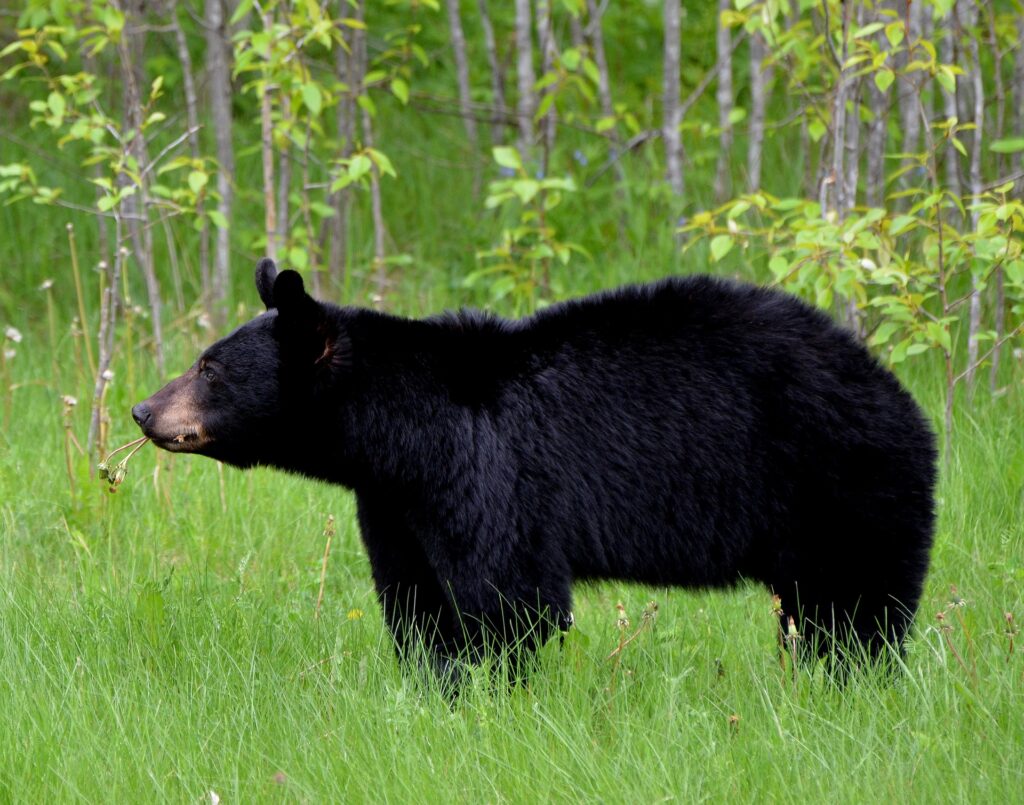
Black bears are just one of several Virginia vertebrates impacted by the redbay ambrosia beetle.
Laurel Wilt Disrupts an Important Food Source
Several animals use the berries produced by laurel species as a food source, such as:
- Rodents
- Songbirds
- Wild turkeys
- Quail
- Black bears
As one of their important sources of nourishment disappears, these animals look for other food sources, including in homes and yards.
The Effects of Laurel Wilt are Even Felt by Humans
The death of laurel species affects humans too. For example, the loss of laurels leads to:
- Loss of laurel wood used for cabinets and boats
- Loss of medicinal resources for American Indian tribes
- Destruction of ornamental landscape trees
- Lowered property values due to tree death
- Increased tree removal costs
Can Laurel Wilt Be Prevented?
There is currently no formalized management strategy to prevent the spread of laurel wilt. While the fungicide propiconazole has been used to inoculate some high-value redbay laurels, the treatment only protects uninfected trees. There are still questions about the fungicide’s ability to protect laurels over the long term and its effectiveness against high numbers of redbay ambrosia beetles.
While treatments are lacking, the Alexandria-based American Society for Horticultural Science published a study highlighting the use of dogs to sniff out laurel wilt, a detection strategy that could be useful in the future as treatment research progresses.
How You Can Help Stop the Spread of Laurel Wilt
Though laurel wilt has no effective treatment at this time, there are five things you can do to help stop the spread of the redbay ambrosia beetle:
- Regularly monitor your trees for signs of laurel wilt
- Remove trees infected with laurel wilt as soon as possible
- Burn or chip infected wood to destroy redbay ambrosia beetle larvae
- Avoid transporting wood infected with laurel wilt
- If you must store cut laurel wood, cover infected wood to prevent emerging redbay ambrosia beetles from migrating
We Can Help with Ambrosia Beetles & Other Insect Pests
Although there’s no treatment for laurel wilt, the expert team at Absolute Tree Service in Alexandria, VA can quickly remove infested laurels from your property. We also offer a complete range of pest and disease treatment and prevention options, including a thorough arborist assessment to evaluate the health of your trees and shrubs. Keeping your trees healthy gives them the best chance of fighting off insect infestations and tree diseases.
To schedule an arborist visit for a free tree health evaluation or treatment estimate, request a quote online or call us at 703-969-6207 today!
For the Absolute Best Tree Service in Northern Virginia, call Absolute Tree Today!
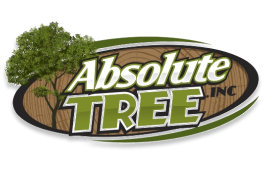
Author Profile: Ashley Davis
Over the last 19 years, Absolute Tree has grown a reputation as one of the premier tree service companies in the Northern Virginia areas. And there’s a good reason for this—we love trees and our passion for them shows. When you call on Absolute Tree for tree service, you aren’t just getting “some guys who cut down trees.” You’re hiring highly skilled arborists who understand the growth of trees and consider tree care an art form.
Stay Up-to-date!
Swing in each month for new articles, pest alerts, local resources, tree care tips, tree health updates, and landscape maintenance ideas

